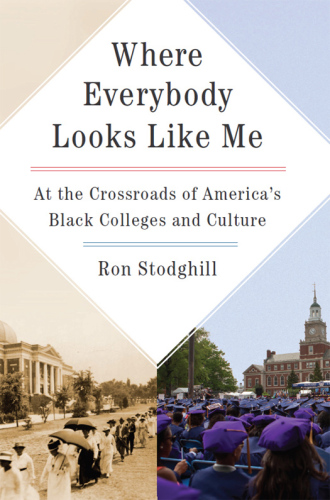
Where Everybody Looks Like Me
At the Crossroads of America's Black Colleges and Culture
کتاب های مرتبط
- اطلاعات
- نقد و بررسی
- دیدگاه کاربران
نقد و بررسی

July 27, 2015
Historically black colleges and universities (HBCUs) have long served as “the backbone of America’s black middle class” but today face declining enrollment, eroding federal support, weak endowments, and stiff competition from mainstream colleges. Award-winning journalist Stodghill (Redbone: Money, Malice and Murder in Atlanta), who teaches at Johnson C. Smith University, a historically black university in North Carolina, chronicles the immense hurdles facing HBCUs through in-depth interviews with their leaders, professors, students, and trustees. In an episodic narrative, Stodghill gives starring roles to Howard University’s trustee, Renee Higginbotham-Brooks, and the battle she waged to replace the university’s ineffectual president; Savannah Bowen, a student athlete from Westchester County who chooses Howard over Macalester College, which Stodghill calls a “bastion of white privilege”; John Wilson, Morehouse College’s transformative new president; and Johnny Taylor, the “blunt” CEO of the Thurgood Marshall College Fund, who would like to see more black alumni contributing to their alma maters. Though too many pages are devoted to the Howard University trustee battle, Stodghill’s vivid reporting and sense of story highlight the continuing value of HBCUs and clarify the tough decisions being made to ensure their survival. Agent: Leah Spiro, Riverside Creative Management.

Starred review from September 1, 2015
With a long history of educating the black elite and intelligentsia, from Martin Luther King Jr. to Alice Walker to Spike Lee, historically black colleges and universities have reflected the aspirations and conditions of black America. They continue to do so as they face the enormous economic challenges of cuts in government funding and declining enrollment as mainstream colleges attract the most promising black students. Drawing on interviews with students, alumni, administrators, and board members, award-winning journalist Stodghill looks at the illustrious history and troubling trends of HBCUs. Board member and whistle-blower Renee Higgenbotham-Brooks reveals the financial skulduggery that has brought Howard University to a crisis. Beverly Tatum details her decision to drop athletics and save money at Spelman College. John Wilson, who drew fire as head of the White House task force on HBCUs and is now head of Morehouse College, speaks on the need to be more businesslike and beef up endowments. Among the voices are students speaking of the nurture and comfort they find at institutions created to educate them when other institutions would not. From the classroom to the boardroom, Stodghill renders a very painful but necessary analysis of the future of the nation's 104 HBCUs.(Reprinted with permission of Booklist, copyright 2015, American Library Association.)

September 1, 2015
Journalist Stodghill (interdisciplinary studies, Johnson C. Smith Univ.; Redbone) paints a vivid portrait of the vitality and importance of historically black colleges and universities (HBCUs) despite examples of myopic, misguided leadership and societal shifts away from the notion of segregated education. Interview material provides the most riveting narratives surrounding failures both large, and largely public, as well as small and private, that have chipped away at the success and impeccable reputation these historically significant institutions once enjoyed. The interview subjects further bob and weave throughout the book, lending a novelistic sense of character fleshed out by the compelling experiences conveyed. Overall, scholarship here does little to refine facts and figures; citations could be useful for Stodghill's numbers regarding aspects of African American education rates. Or, if it is all gleaned from government data, a bit more illumination on specifics would have been appreciated. Nonetheless, this work, which is evocative of Lawrence Otis Graham's insight in Our Kind of People, compellingly portrays a necessary bastion that must collectively right ways to maintain its very existence. VERDICT Highly recommended for students of education, history, and African American studies. [See Prepub Alert, 3/9/15.]--Jewell Anderson, Savannah Country Day Sch. Lib., GA
Copyright 2015 Library Journal, LLC Used with permission.

April 1, 2015
An award-winning journalist teaching at Johnson C. Smith University, a historically black college, Stodghill investigates the crisis faced by such colleges and universities in America today, including recruitment of the best black students by Ivy League schools and efforts by Republican state legislators to merge, consolidate, or shut them down. But these schools have traditionally been the source of America's black middle class, and interested parties are fighting back.
Copyright 2015 Library Journal, LLC Used with permission.

























دیدگاه کاربران